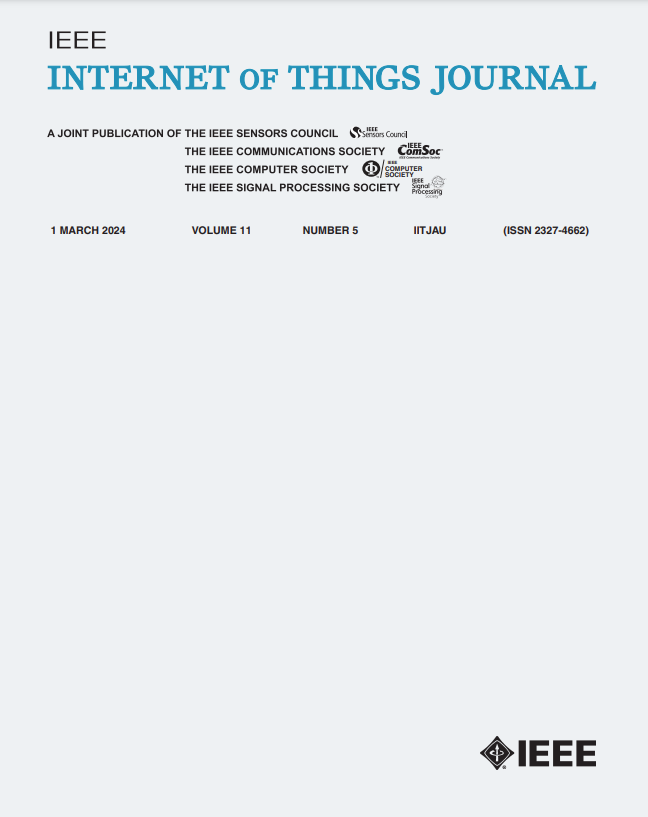A Systematic Literature Review of IoT System Architectural Styles and Their Quality Requirements
IF 8.2
1区 计算机科学
Q1 COMPUTER SCIENCE, INFORMATION SYSTEMS
引用次数: 0
Abstract
The Internet of Things (IoT) is increasingly prevalent, with systems developed across various domains. Choosing the right IoT architectural style is challenging due to the diversity of devices, dynamic environments, and real-time data needs. This choice significantly impacts system quality, requiring a careful balance of quality requirements and tradeoffs. Previous studies have not adequately identified the most suitable architectural styles for specific IoT quality needs. This study presents a systematic literature review of 103 primary studies (PSs) on IoT system quality requirements and architectural styles, assessing how each architectural style satisfies specific requirements. We followed the preferred reporting items for systematic review and meta-analysis (PRISMA) protocol to report our findings and answer three research questions (RQs). We selected PSs by applying inclusion and exclusion criteria to relevant papers published until the end of 2023. We analyzed data from PSs to understand IoT system quality requirements and architectural styles, assessing their alignment. The research revealed ten essential quality requirements for IoT systems and identified ten distinct architectural styles. Notably, each architectural style varies in its capacity to fulfill specific quality requirements, particularly regarding security, scalability, and performance. SOA, client-server, and REST architectural styles best fulfill many quality requirements. However, various architectural styles, such as Layered, Microservices, and Peer-to-Peer, show limited support for privacy requirements. Our findings can guide IoT systems practitioners in selecting an architectural style that aligns with their desired quality standards. Additionally, we recommend new research opportunities to deepen understanding of key architectural styles based on specific quality requirements.物联网系统架构风格及其质量要求的系统性文献综述
物联网(IoT)日益盛行,系统开发跨越各个领域。由于设备、动态环境和实时数据需求的多样性,选择正确的物联网架构风格具有挑战性。这种选择会对系统质量产生重大影响,需要在质量要求和权衡之间取得谨慎的平衡。以往的研究没有充分确定最适合特定物联网质量需求的架构风格。本研究对 103 项关于物联网系统质量要求和架构风格的主要研究(PSs)进行了系统的文献综述,评估了每种架构风格如何满足特定要求。我们遵循系统综述和荟萃分析首选报告项目(PRISMA)协议报告研究结果,并回答三个研究问题(RQs)。我们通过对 2023 年底之前发表的相关论文采用纳入和排除标准来选择 PSs。我们分析了 PS 的数据,以了解物联网系统的质量要求和架构风格,评估它们之间的一致性。研究揭示了物联网系统的十项基本质量要求,并确定了十种不同的架构风格。值得注意的是,每种架构风格在满足特定质量要求的能力上都有所不同,尤其是在安全性、可扩展性和性能方面。SOA、客户端-服务器和 REST 架构风格最能满足许多质量要求。然而,分层、微服务和点对点等各种架构风格对隐私要求的支持有限。我们的研究结果可以指导物联网系统从业人员选择符合其所需质量标准的架构风格。此外,我们还推荐了新的研究机会,以加深对基于特定质量要求的关键架构风格的理解。
本文章由计算机程序翻译,如有差异,请以英文原文为准。
求助全文
约1分钟内获得全文
求助全文
来源期刊

IEEE Internet of Things Journal
Computer Science-Information Systems
CiteScore
17.60
自引率
13.20%
发文量
1982
期刊介绍:
The EEE Internet of Things (IoT) Journal publishes articles and review articles covering various aspects of IoT, including IoT system architecture, IoT enabling technologies, IoT communication and networking protocols such as network coding, and IoT services and applications. Topics encompass IoT's impacts on sensor technologies, big data management, and future internet design for applications like smart cities and smart homes. Fields of interest include IoT architecture such as things-centric, data-centric, service-oriented IoT architecture; IoT enabling technologies and systematic integration such as sensor technologies, big sensor data management, and future Internet design for IoT; IoT services, applications, and test-beds such as IoT service middleware, IoT application programming interface (API), IoT application design, and IoT trials/experiments; IoT standardization activities and technology development in different standard development organizations (SDO) such as IEEE, IETF, ITU, 3GPP, ETSI, etc.
 求助内容:
求助内容: 应助结果提醒方式:
应助结果提醒方式:


